In pictures: The military coup in Chile
- Published
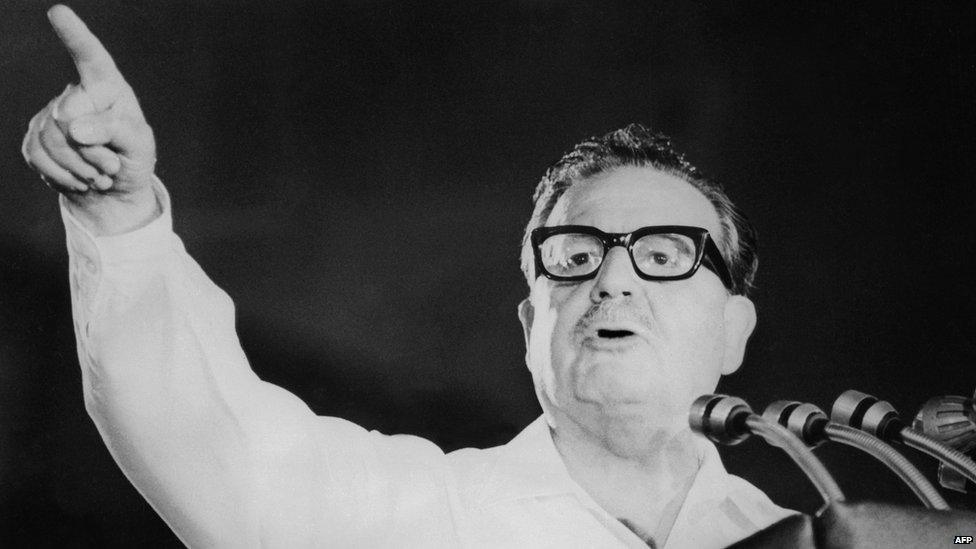
On 11 September 1973 President Salvador Allende of Chile - the world's first democratically-elected Marxist head of state - died in a revolt led by the armed forces. After coming to power in 1970, he introduced a number of economic reforms, including the nationalisation of the mining industry, that angered the opposition and the US government of the time.
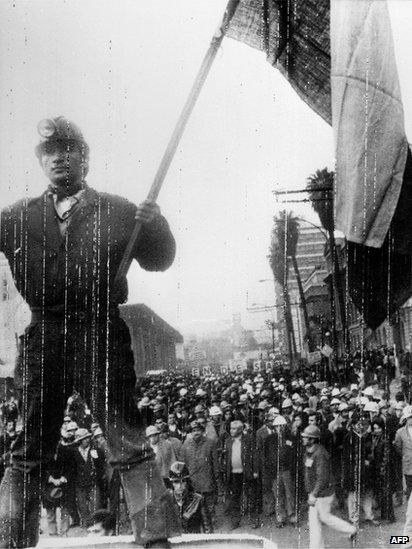
President Allende's attempts to re-structure the nation's economy led to soaring inflation and food shortages. A series of strikes paralysed the country and left the capital isolated in the tense days that preceded the coup.
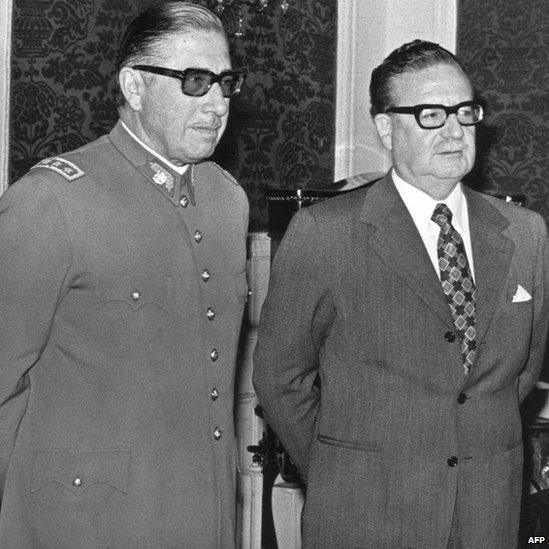
In August 1973, President Allende brought senior army officers into his government in an attempt to head off a revolt. At this time Gen Augusto Pinochet (left) was appointed the head of the army.
.jpg)
The two major opposition parties called for the president's resignation and although Mr Allende called on his followers to support him, there appeared to be little organised resistance.
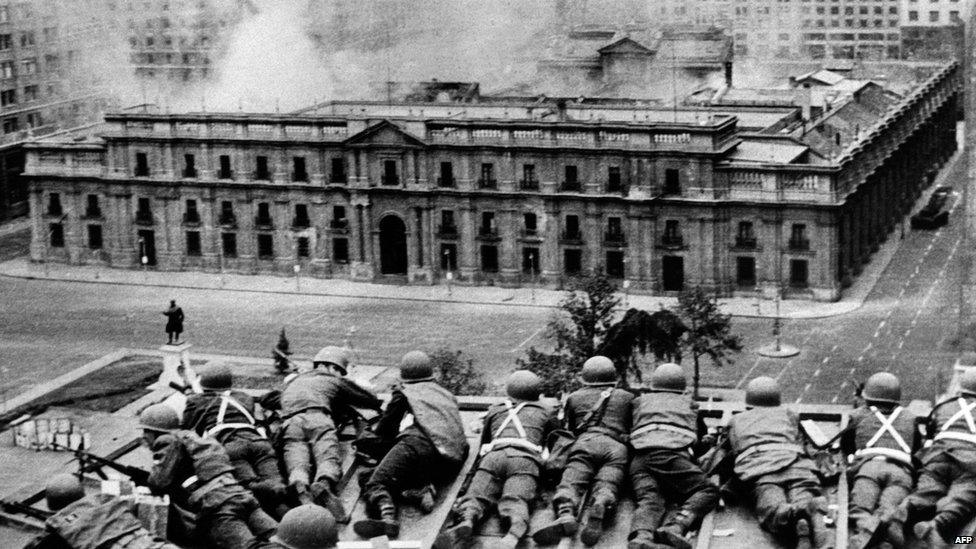
Air Force planes attacked the presidential palace with rockets and bombs and tanks opened fire after the president rejected an initial demand for his resignation.
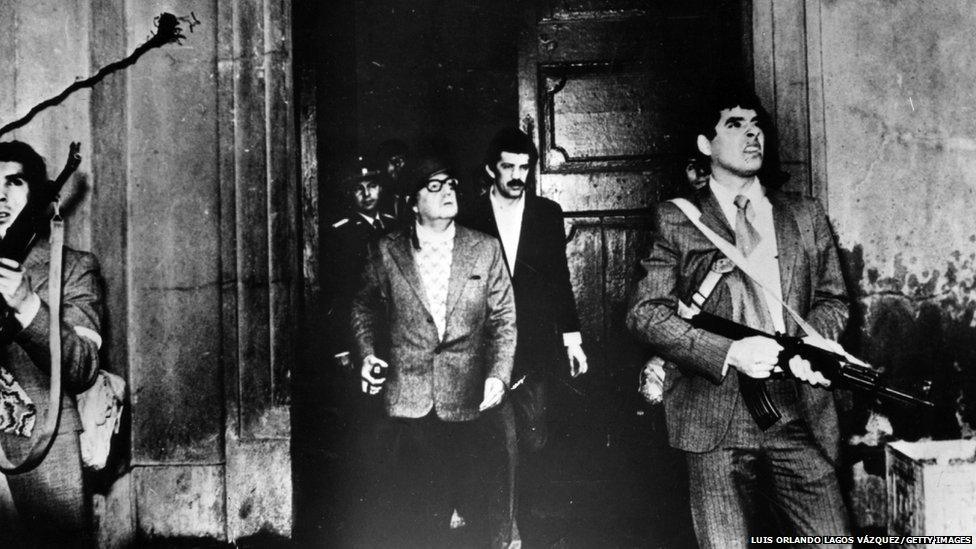
According to military sources, President Allende asked for a five-minute ceasefire in order to resign but the armed forces said that was impossible because snipers loyal to the president were operating from buildings near the presidential palace.
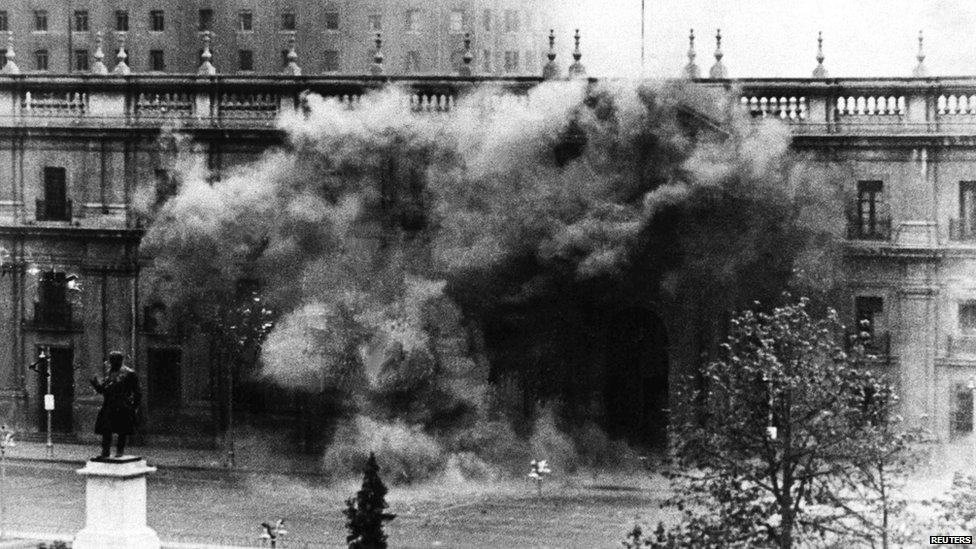
At least 17 bombs were dropped in an attack on the palace, one of which scored a direct hit. President Allende shot himself as troops stormed the building.
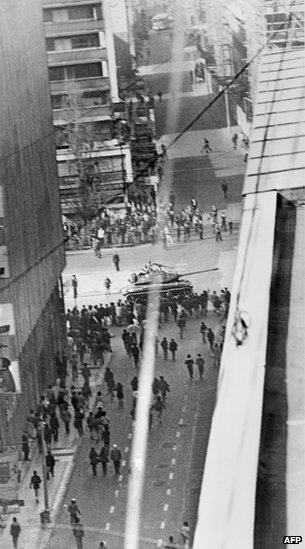
Martial law was declared throughout the country, a curfew imposed, and the carrying of guns was banned.
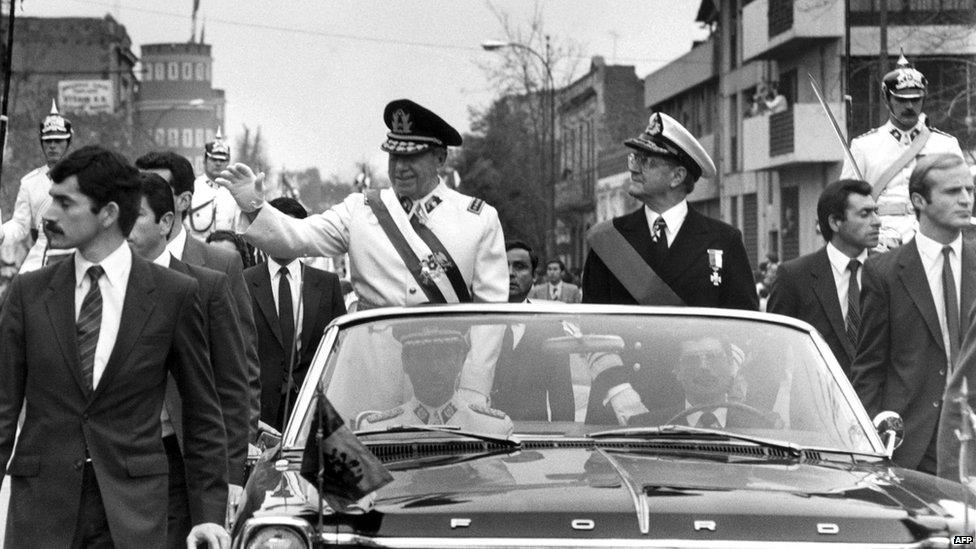
Gen Augusto Pinochet, the Chilean commander-in-chief and a member of the military junta, appointed himself the new president. His cabinet was made up almost entirely of military men.
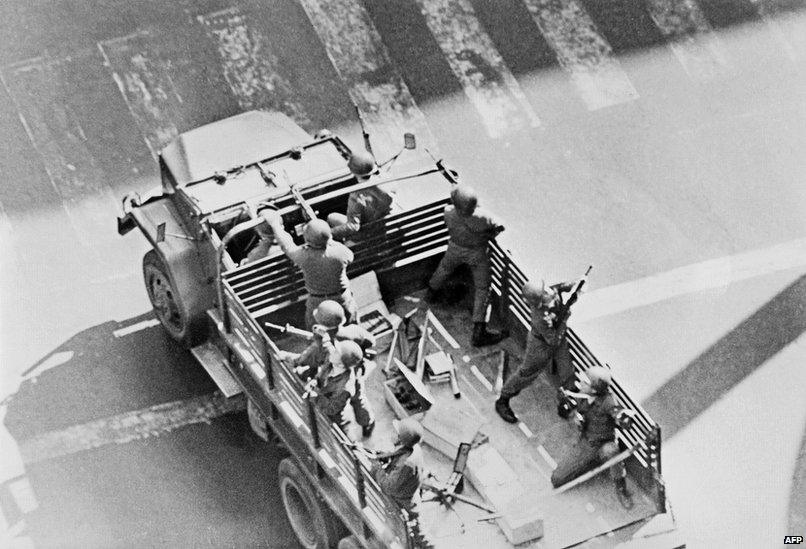
Reports alleged thousands had died - but the military junta said fewer than 100 people lost their lives in the CIA -backed uprising.
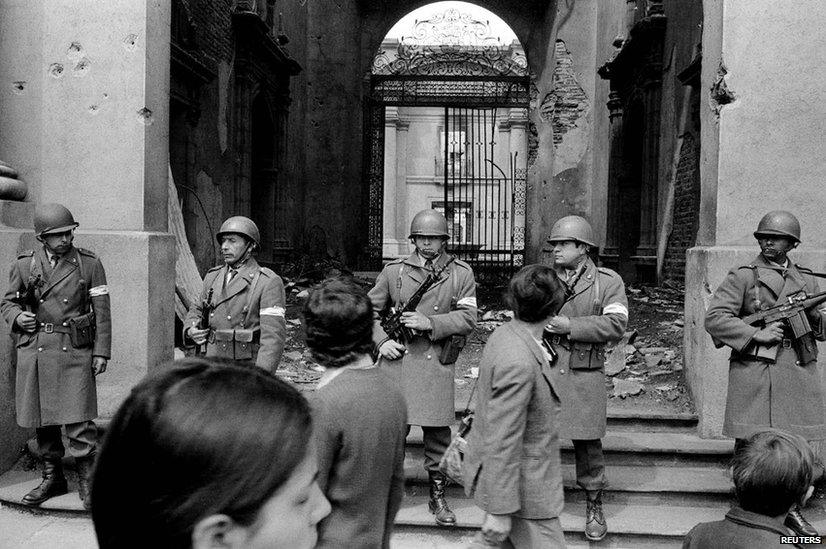
Gen Pinochet ruled for 17 years, during which more than 3,000 political opponents were killed or "disappeared" by the military.